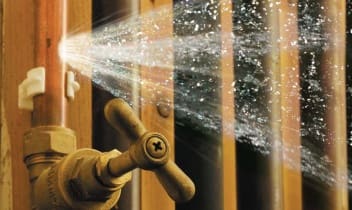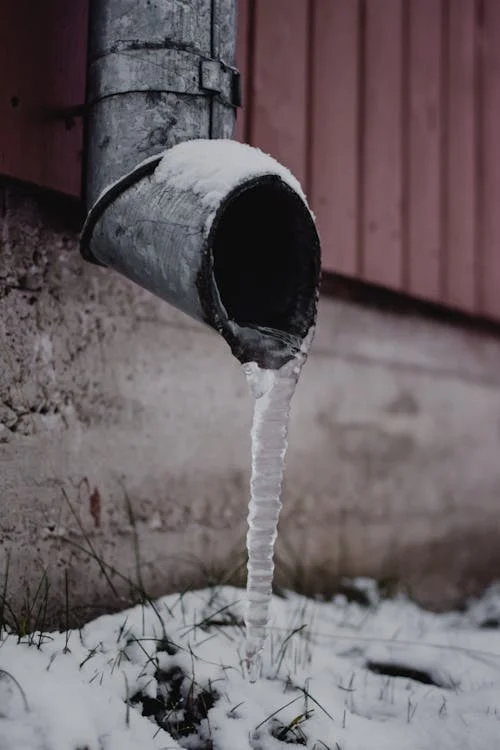Burst Pipe Insurance Claims: What You Need to Know for Water Damage Coverage
Burst Pipe Insurance Claims: What You Need to Know for Water Damage Coverage
Blog Article
Protecting Against Burst Pipeline: Necessary Tips to Secure Your Pipes
Preventing burst pipes is a crucial issue for property owners, particularly during chillier months when the risk of freezing is enhanced. Implementing critical actions such as appropriate insulation, routine inspections, and keeping consistent interior temperatures can considerably reduce the probability of pipe failing. Furthermore, recognizing emergency treatments gears up home owners to respond promptly to prospective pipes issues. Nonetheless, many are not aware of the specific susceptabilities that their pipes might face. Discovering these vulnerabilities can supply very useful insights into securing your pipes system efficiently.
Understand Pipe Vulnerabilities
Recognizing pipe vulnerabilities is important for efficient plumbing maintenance and avoiding expensive damage. Several factors contribute to the susceptibility of pipes to ruptureds, consisting of product structure, age, and environmental conditions. Older pipes, particularly those made from galvanized steel or polybutylene, typically break down gradually, resulting in enhanced risk of leaks and tears.
Temperature level variations can also dramatically influence pipeline stability. In colder environments, water caught in pipelines can freeze, applying and broadening pressure on the pipeline walls, which may inevitably cause a burst. High water stress can strain pipelines, particularly at bends and joints, increasing the likelihood of failing.

Insulate Pipeline Appropriately
Correct insulation of pipelines is essential for stopping freezing and subsequent bursts throughout chilly climate (burst pipe). Shielding your pipes system properly safeguards versus temperature level goes down that can bring about pricey damages. Begin by identifying at risk locations where pipelines are subjected to outside temperatures, such as basements, attics, and exterior walls
Use foam pipe insulation sleeves or cover insulation tape around these areas to supply a protective obstacle. Make certain that all areas of the pipelines, especially those with restricted warm exposure, receive adequate insulation. Pay unique interest to joints and fittings, as these are extra at risk to cold.
When insulating, it's vital to choose products that satisfy regional building codes and are ideal for the certain atmosphere. Fiberglass insulation is typically recommended for its thermal resistance properties. In addition, think about making use of warm cables or tape in severe conditions, which can be connected in to provide supplementary warm
Routinely evaluate insulated pipelines for any indications of wear or damage, as jeopardized insulation can diminish its efficiency. By taking these aggressive actions, you substantially reduce the danger of pipeline bursts, making sure a dependable pipes system throughout continue reading this the cold weather.
Maintain Constant Temperature
A stable interior temperature level is essential for stopping ruptured pipelines during the cold months. When temperature levels drop, water within pipelines can ice up, producing and expanding pressure that might ultimately trigger the pipelines to burst.Making use of a programmable thermostat can help handle interior temperatures successfully, ensuring that rooms with plumbing stay cozy even when read what he said the home is empty.
This minor circulation of water can stop freezing by minimizing pressure within the pipes. By implementing these strategies, home owners can dramatically lower the danger of pipe bursts and safeguard their pipes systems versus the extreme winter season elements.
Routinely Evaluate Plumbing
Regular examinations of pipes systems are essential for preventing ruptured pipes and keeping general home integrity. Regular checks allow home owners to determine potential problems prior to they intensify into pricey repair work or significant water damage. Throughout these evaluations, it is necessary to take a look at noticeable pipelines for indications of deterioration, leaks, or put on. Pay unique interest to areas susceptible to cold, such as basements, attic rooms, and outside walls.
In addition, examining links and joints is vital, as these points are usually susceptible to leaks. House owners need to also evaluate water stress degrees, as too much stress can stress the pipes system and raise the threat of pipe bursts.
Think about scheduling professional plumbing assessments at least once a year, especially before winter season, to guarantee your system is prepared for cooler temperatures. By being positive in your method, you can safeguard your home versus the pricey and turbulent effects of ruptured pipes.
Know Emergency Treatments
Comprehending emergency procedures is crucial for every property owner, especially after conducting routine plumbing assessments. Being prepared for a plumbing emergency can considerably minimize damages and save costs.
Following, maintain crucial devices helpful. A plumbing emergency situation package ought to include a wrench, plunger, and towels, as well as a flashlight and a pail for little leakages. Furthermore, take into consideration having the call details for a relied on plumbing professional conveniently available, should the situation escalate beyond your control.
If you detect a leakage or ruptured pipe, quickly switch off the water system and notify your plumber. In addition, document the damage with photos for insurance policy functions. burst pipe. Know the indications of possible pipes issues, such as uncommon water stress variations or damp places on wall surfaces
Inevitably, aggressive knowledge and speedy activity are critical in taking care of pipes emergency situations, guaranteeing your home stays safeguarded and minimizing possible damage.

Conclusion
In final thought, preventing ruptured pipelines necessitates a complex technique that consists of understanding pipe susceptabilities, appropriate insulation, maintaining consistent indoor temperatures, normal inspections, and understanding of emergency procedures. By applying these vital approaches, the danger of plumbing failures can be significantly decreased, thus making certain the longevity and performance of the plumbing system. Proactive actions not only guard against possible damages yet also add to overall water preservation and the protection of building.
In chillier climates, water entraped in pipes can freeze, applying and broadening pressure on the pipeline wall surfaces, which may inevitably lead to a burst. When temperatures decline, water within pipes can browse around this site freeze, producing and increasing pressure that may eventually create the pipes to burst. By carrying out these strategies, house owners can significantly decrease the danger of pipeline ruptureds and safeguard their pipes systems versus the severe winter months aspects.

Report this page